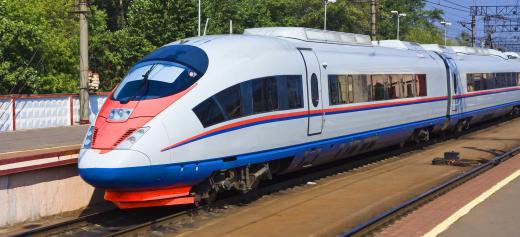What is Air Resistance?
Air resistance, also called wind resistance, is the slowing effect air creates on a body as it moves through the atmosphere. Objects or people in free fall will find their descent slowed by air, for example. It is also a factor in the motion of aircraft or any vehicle that moves at high speeds. This resistance has a variety of other effects, some of them easily observable.
Humankind has always been able to observe the effects of air resistance, but the physical factors involved were not understood until the 17th century. Galileo, trying to understand the principle of gravity, used experiments to test Aristotle’s thesis that heavier objects fall faster than lighter ones. He was able to prove this was not true; the gravitational force affects every object in the same way. He realized the lighter objects were slowed by resistance from the air, and the heavier objects had enough weight to counter this factor.

Air resistance is caused by the collision of a solid object with gas molecules in the atmosphere. The greater the number of air molecules, the greater the resistance. In practice, this means that an object with a wider surface encounters greater resistance. A faster object also has greater air resistance because it contacts more air molecules in a given span of time. When the resistance of an object in free fall equals the pull of gravity on the object, it no longer accelerates. This is called terminal velocity, and it varies depending on factors such as weight, surface area, and speed.

The effect can be observed by watching skydivers in action. Before activating her parachute, the skydiver falls at terminal velocity, seemingly held aloft by the air. If she draws her limbs in and points her body downward, her speed will increase as the resistance is lessened. By positioning her body parallel to the ground and spreading her arms and legs, she can slow her descent. Once she opens her parachute, the resistance of the air will increase, slowing her further. The terminal velocity of the opened parachute is low enough that she will strike the ground at a survivable speed.

Aircraft are designed to overcome air resistance, which is called drag in the field of aerodynamics. The streamlined design of most jet aircraft and rockets allows them to pass through the atmosphere with the least amount of drag possible. Cars and trains also use streamlined designs to a lesser degree for the same purpose. Unless they are designed for high-speed travel, air resistance is not as significant an obstacle for land vehicles as it is for aircraft. Semi trucks sometimes have curved roofs to decrease the drag in the space between truck and trailer, which can have a negative effect on gas mileage.
AS FEATURED ON:
AS FEATURED ON:















Discussion Comments
I've always been a little confused by the air resistance definition. It boggles my mind that though a human would meet with more air resistance than a leaf if both were falling from the top of a building, the human would crash to the ground long before the leaf would.
I would think that the leaf that is floating happily through the air, as if being cradled by invisible arms and maneuvered gently to the ground, would have to have a lot of resistance in order to fall so slowly. I just don't grasp this concept.
I guess calculating air resistance is important to car designers. Making a vehicle aerodynamically makes it encounter less resistance. A lot of vehicles have smooth curves so that they will go faster.
Post your comments